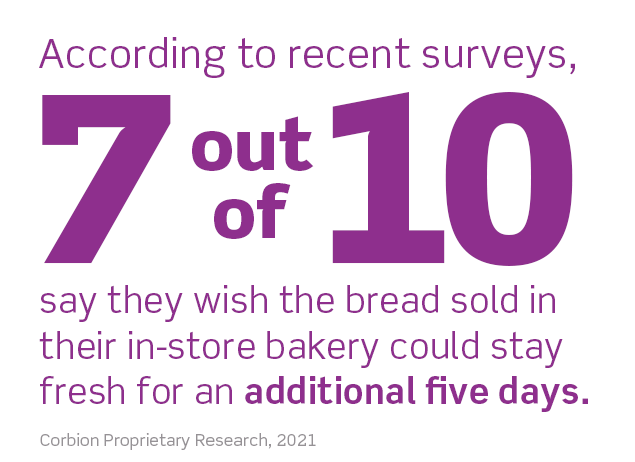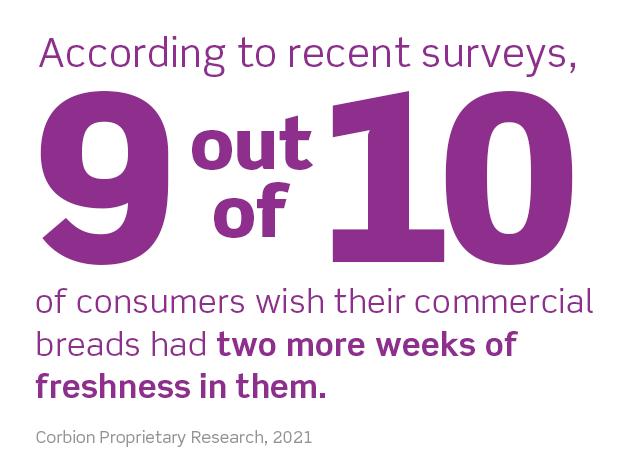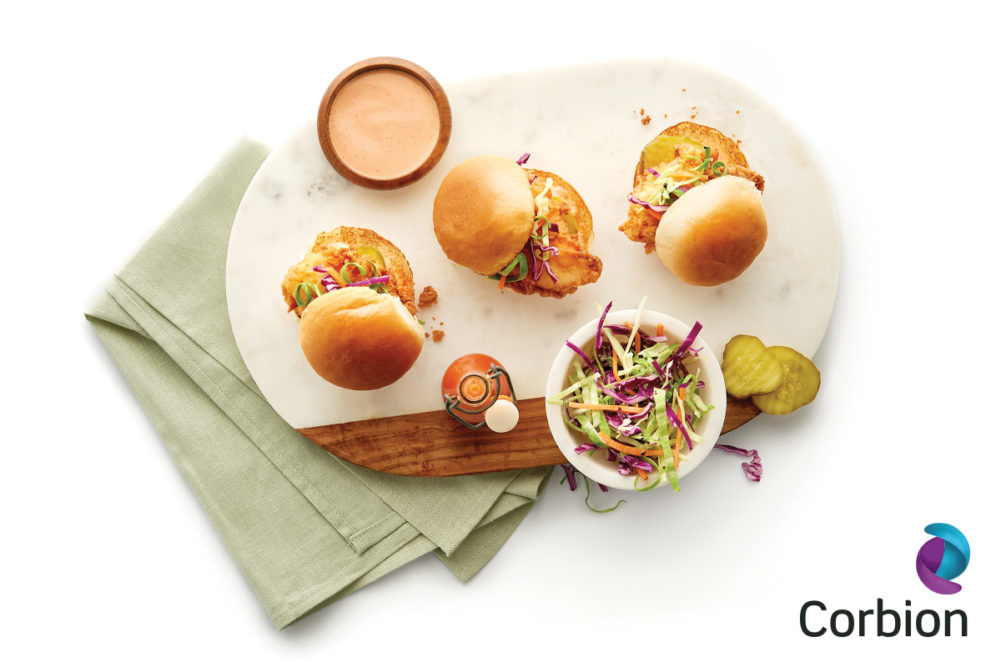Freshness
It’s about a lot more than making it to the sell-by date. It’s about maintaining maximum quality for the longest possible time. Because consumers are a demanding bunch. They want shelf life, but they also want the quality attributes they desire extended for as long as possible.
According to recent surveys, nine out of ten of consumers wish their commercial breads had two more weeks of freshness in them. Seven out of ten say they wish the bread sold in their in-store bakery could stay fresh for an additional five days1.
Those are tall orders for any baker. Because freshness is a tricky word. It’s not a single attribute, but rather an entire range of attributes covering everything from taste and smell to texture and appearance.
Explore the overarching concept of freshness, delve into the various factors influencing it, and seamlessly transition to practical tips for effectively maintaining optimal freshness.
 Source: Corbion
Source: CorbionAn Introduction to Staling
Bakers don’t like to think about it, but the staling process begins virtually from the moment a bread is taken out of the oven. And while most people associate staling with loss of moisture, staling is really about starch.
Starch undergoes a remarkable transformation during the baking process. In the oven, starch granules in the flour begin to absorb water and swell. This process is called gelatinization, and it plays an important role in the quality of a loaf of bread.
As the bread cools, the starch begins to recrystallize in a process called retrogradation. The bread becomes drier, firmer and more brittle, and loses the sensory characteristics consumers find most appealing. The amylopectin fraction of starch plays the largest role in staling as the granules recrystallize.
Resilience in Breads
One key freshness attribute that every consumer perceives but can’t necessarily name is resilience.
Resilience is an attribute most of us think of as “spring-back”, the ability of bread to recover its shape after it’s been compressed. Consumers commonly experience resilience issues in buns, where the top layer of a package of burger buns is rounder with higher volume than the layer beneath.
Resilience isn’t only a volume/shape/appearance issue, it has implications for the eating characteristics. A bun that’s rounder and taller not only looks better than a more compacted bun, but it’s also better tasting with better mouthfeel.
Delivering Freshness with Enzymes
Enzymes are a natural anti-staling ingredient. Blended into dough, they slow the staling process down by changing the shape of starch molecules, minimizing the recrystallization process.
Recent advancements in enzyme technology allow bakers to extend other freshness attributes like softness, moistness, tenderness, and resilience. Enzymes can also deliver a variety of functional benefits like increased dough strength, increased absorption, and reduced mixing times.
Perhaps best of all is that enzymes achieve all this while delivering a clean label. Because freshness isn’t the only thing on consumers’ wish lists. Consumers also want things like authenticity and nutrition. Clean-label claims on packages, with recognizable ingredients listed in easy-to-understand language, reassure consumers that the foods inside are good for them.
The Freshness Experts
Corbion is the world leader in freshness solutions, helping bakers around the world deliver consistent, quality products with the clean label and sustainability benefits consumers want. Our freshness solutions can deliver the structural resilience that keeps the crumb, softer, fluffier, and more tender for longer, even to the very end of shelf life.
Our portfolio is both broad and deep. It can help deliver a full range of freshness attributes while also minimizing food waste.
 Source: Corbion
Source: CorbionA Bun Troubleshooting Guide
Having trouble with bun quality? Here are some easy-to-implement solutions to five of the most common bun quality issues.
Large Holes just Below the Crust
- Optimize mixing times
- Review and potentially reduce usage levels of vital wheat gluten and dough conditioners
- Review and reduce dough temperature
- Check if oxidation system is too high
- Check for improper humidity levels at proof box
- Optimize absorption in formulation
Flat Bun with Low Volume
- Optimize absorption levels in formulation
- Optimize levels of dough conditioners and oxidants
- Check that vital wheat gluten levels are in range
- Increase yeast in formulation
- Review the mix time for optimal dough development
- Check dough temperatures to meet operations standards
- Check for improper humidity levels at proof box
- Reduce oven temperatures
Blotchy Top Crust
- Reduce absorption on formulation
- Reduce yeast levels
- Check for improper humidity levels at proof box
- Check if fermentation time is in range
- Optimize dough temperature
- Review and reduce oil at rounder
Open Grain/Open Cell Structure
- Increase strength in formulation
- Review and increase mix time
- Optimize absorption in formulation
- Check if yeast levels are too high
- Check if scaling weight is too low
- Check if dough temperatures are out of range
Excessive Break and Shred
- Increase mix time
- Reduce vital wheat gluten
- Increase absorption
- Increase humidity on the proof box
- Increase yeast to increase height of the buns
- Refer to vendor for proper proofer profiling
- Refer to vendor for proper oven bake profiling
1Corbion proprietary research, 2021.






